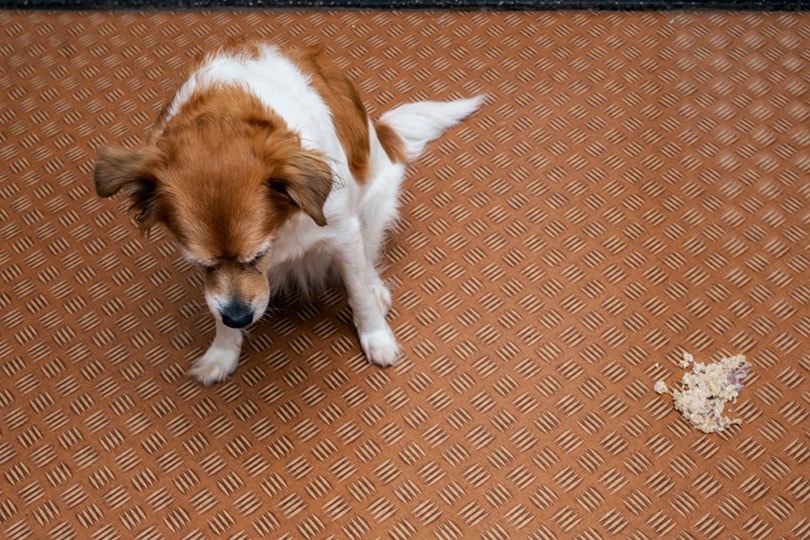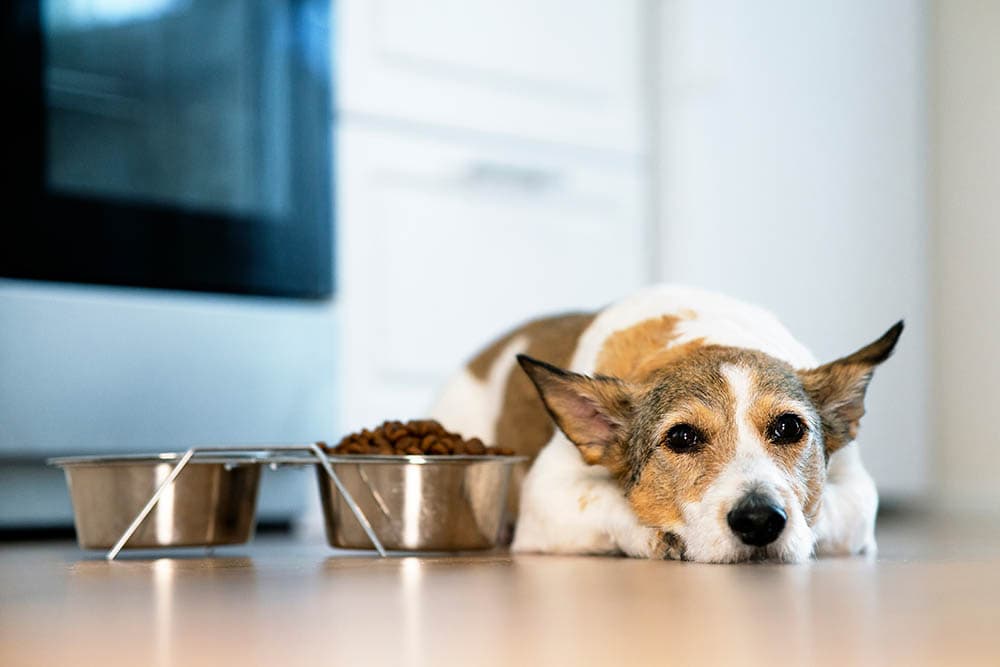Canines are omnivorous creatures that can eat many different plants like vegetables, fruits, herbs, and greens. However, that doesn’t mean certain plants aren’t unhealthy, or even dangerous, for your companion. Of all the good and bad vegetables, where does watercress fall?
You should not feed your dog any variety of watercress, unfortunately. It could lead to bouts of diarrhea and vomiting, being ultimately uncomfortable and problematic for your dog. It might also carry heavy metals or bacteria that can make your dog very ill. We will explain the potential consequences in this article.
Dogs Shouldn’t Eat Watercress
If your dog ate watercress, it is a good idea to contact your vet. According to the ASPCA, watercress, or Nasturtium officinale, is mildly toxic to dogs, cats, and horses. Your dog shouldn’t eat any of this substance, as it can cause uncomfortable side effects.
If your dog consumed watercress, you should contact poison control or your veterinary office for guidance. Generally, it causes mild side effects that will pass at home. However, if your dog ate large quantities, it could lead to a vet visit for further treatment.

What Is Watercress Exactly?
Watercress is a dark leafy green that offers a wide range of health benefits to humans. Watercress easily grows in alkaline waters and spring runs. It can easily grow in most North American areas.
Many people can grow local watercress, though it is often bought from grocery stores in the produce section. You can use this plant to spruce up salads and several other dishes. However, these same benefits do not extend to our canine companions.
All forms of cress, including American cress, winter cress, and watercress are toxic to dogs. Since watercress has a bitter, peppery taste, most dogs will have no interest in this plant. On the rare occasion that your dog does, you should keep it from their reach.
Risks Associated with Watercress Consumption
If your dog consumes watercress in any quantity, it can have an impact on their health. Some of these issues will pass in a few days while others require veterinary intervention, such as medications or treatments.
Gastrointestinal Upset
The primary problem with watercress consumption is the impact on your dog’s gastrointestinal system. According to the ASPCA, it is toxic to dogs, cats, and horses, disrupting the GI system.

Signs of Gastrointestinal Upset
Watercress is described as a gastrointestinal irritant.
- Vomiting
- Diarrhea
- Abdominal discomfort
Usually, these signs go away on their own. However, if your dog seems to be getting sicker or shows other signs of distress, it could be more serious than an upset stomach.
Contracting Bacteria or Parasites
If you feed your dog watercress that has grown wild in nature, they can contract several bacterial and parasitic infections. Usually, with proper washing, most bacteria can be avoided, but it’s a prime environment for certain germs to thrive.
Liver Fluke
Watercress can carry a parasite called liver fluke. Liver fluke is very rare in the United States. Most infections occur in Europe, Asia, Africa, and South America.

Signs of Liver Fluke
Liver fluke is more prevalent among young adult dogs. Clinical signs appear from a few days to several months after exposure.
- Lethargy
- Weight loss
- Vomiting
- Diarrhea
- Yellowed skin
- Inappetence
Infected dogs can be treated, but this requires veterinary oversight.
Bacteria
Harmful bacteria, particularly E. coli, are very prevalent in watercress. If your dog encounters salmonella, E. coli, listeria, or any other foodborne toxin, it can have serious consequences. A pet with foodborne illness will need proper supportive care.
Signs of Bacteria Exposure
If your dog is at risk for toxicity, it is good to know the signs so you can be prepared to act. While most dogs recover from these ailments, they can be very dangerous and cause severe dehydration.
- Drooling
- Vomiting
- Diarrhea
- Stumbling
- Bloody stool
- Loss of appetite
If you believe your dog has had any sort of toxic exposure, get them to your vet without delay. Dehydration can quickly lead to more serious issues if it isn’t properly treated.

Other Toxic Plants to Be Aware of
Watercress isn’t the only plant that is perfectly acceptable for humans but not pets. Here is a quick list of some other toxic plants and herbs for dogs:
- Garlic
- Chives
- Leeks
- Onions
- Scallions
- Shallots
If you want to have a handy resource for toxic plants, the ASPCA has this list to help keep your household pets safe.
Conclusion
Watercress is not suitable for dogs. Even though it can offer quite a few benefits to people, it isn’t healthy for dogs and can pose several health risks if it is ingested.
If your dog has already eaten watercress, make a quick phone call to your vet for guidance. They may want you to wait at home to monitor your dog or bring them in for further evaluation.
Featured Image Credit: Vicky25, Shutterstock











